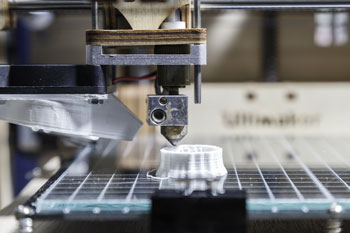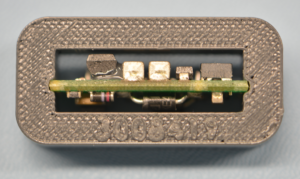3D printing (additive manufacturing) has made headlines for producing everything from prosthetics to pizza.
In addition, many automotive manufacturers including Ford and Lamborghini have announced that they 3D print prototypes of components for their vehicles.
![]() For more on prototyping, check out our new time-lapsed video of an prototype being printed — 3D Printing for Prototyping: Start to Finish
For more on prototyping, check out our new time-lapsed video of an prototype being printed — 3D Printing for Prototyping: Start to Finish
But the potential for 3D printing goes way beyond prototyping, and it can save time and money for both the manufacturer and the customer in some rather unexpected ways.
1. Quick Solutions to Production Needs
Whether you are an automotive manufacturer or design and make photoelectric sensors, requests for customization can occur. Waiting for a third party to create and deliver custom solutions can slow production. That’s where 3D printing can be a huge time-saver.
For example, at SICK's Eagle Creek Manufacturing facility, one of the production teams recently needed to fill a batch of sensors with a potting compound that prevents overheating. But the compound had to be injected at a specific angle so it wouldn’t obstruct the LED lights on one side of the sensor.
Instead of eyeballing the angle for each sensor, the team quickly designed and 3D-printed a tray that would hold multiple sensors at the right angle and perfectly fill them every time. And rather than waiting weeks for a third party to make the custom pieces, the team printed their own solution overnight, ensuring the quality of the sensor without slowing down production time.
2. Inspection & Quality Control
Another behind-the-scenes use for 3D printing is inspection. In production, quality control is essential, so it’s important to inspect individual components to make sure they are the right size, shape, etc. This can be a time-consuming process.
SICK's Eagle Creek Manufacturing facility recently needed to inspect the height of components on a circuit board to make sure they would fit inside one of our sensors. The production team needed to quickly sort the usable circuit boards from the unusable ones. Again, this could have been done visually, but 3D printing made for a much more streamlined and accurate solution.
Multiple small brackets (pictured right) were printed to the exact specifications that the circuit boards needed to be to fit into the sensor. Then, the circuit boards could simply be inserted into the brackets to quickly determine whether the components were the correct height, eliminating delays and errors.
3. Product Testing
A third unexpected use for 3D printing is testing the limits of a product in order to confidently communicate those limits to customers. In a recent situation, SICK engineers easily printed custom torque wrench adapters to test the breaking point of a sensor. Again, being able to design and 3D print these unique pieces in-house was an easy, time-saving solution to product testing needs.
Conclusion
While rapid prototyping via 3D printing continues to gain traction, much of the value 3D printing holds for manufacturers and customers alike can be found in its lesser known applications.
Custom 3D printed parts can significantly improve the speed and accuracy of time-consuming production tasks such as testing and inspection. These benefits are crucial to delivering quality products to customers in a timely manner.







